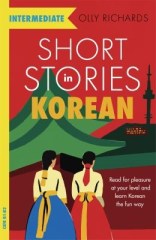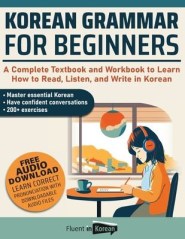 Globally, the Korean language is spoken by over 80 million people, primarily in South Korea (51.7 million) and North Korea (26.4 million). Beyond the Korean Peninsula, significant Korean-speaking communities exist due to historical migration, notably China with approximately 2 million speakers. Japan hosts about 500,000 Korean speakers, mainly descendants of Koreans who migrated during the early 20th century. Further abroad, the United States is home to around 1.8 million Korean speakers, with large communities in cities like Los Angeles, New York, and Washington D.C. Other countries with notable Korean-speaking populations include Russia, with approximately 250,000 speakers, and Canada, where around 218,000 individuals speak Korean (worlddata.info). Australia has a Korean-speaking population of about 102,000, primarily residing in New South Wales. Smaller communities are also found in countries such as Uzbekistan, Kazakhstan, and various European nations. These global communities maintain the Korean language through cultural institutions, schools, and media, preserving their linguistic heritage and contributing to the worldwide spread of Korean culture (britannica.com and pathtokorean.com).
Globally, the Korean language is spoken by over 80 million people, primarily in South Korea (51.7 million) and North Korea (26.4 million). Beyond the Korean Peninsula, significant Korean-speaking communities exist due to historical migration, notably China with approximately 2 million speakers. Japan hosts about 500,000 Korean speakers, mainly descendants of Koreans who migrated during the early 20th century. Further abroad, the United States is home to around 1.8 million Korean speakers, with large communities in cities like Los Angeles, New York, and Washington D.C. Other countries with notable Korean-speaking populations include Russia, with approximately 250,000 speakers, and Canada, where around 218,000 individuals speak Korean (worlddata.info). Australia has a Korean-speaking population of about 102,000, primarily residing in New South Wales. Smaller communities are also found in countries such as Uzbekistan, Kazakhstan, and various European nations. These global communities maintain the Korean language through cultural institutions, schools, and media, preserving their linguistic heritage and contributing to the worldwide spread of Korean culture (britannica.com and pathtokorean.com).
In the United States, approximately 1.8 million people speak Korean at home, accounting for about 8% of the Asian American population. This figure includes both U.S. citizens of Korean descent and South Korean nationals living in the U.S (pewresearch.org). Korean is one of the top 15 non-English languages that is spoken in every US state making it to number four on the list of Asian American languages (gala-global.org). The Korean American community is primarily concentrated in metropolitan areas with significant immigrant populations. Notably, about 30% of Korean Americans reside in the Los Angeles and New York metropolitan areas, reflecting historical immigration patterns and the establishment of vibrant Korean communities in these regions. These communities often form tight-knit neighborhoods where Korean is commonly spoken, and cultural traditions are maintained through local businesses, schools, and community centers. Besides California and New York, other states with significant Korean-speaking populations include Hawaii (368,734), Texas (214,854), Washington (187,513), Nevada (178,655), Florida (171,931), Illinois (169,520), New Jersey (150,084), and Virginia (119,925). The growth of the Korean-speaking population in the U.S. has been substantial in recent decades increasing by about 330% between 1980 to 2010.
In the State of Iowa, the Korean-speaking population is somewhere around 3200 speakers and is concentrated in Des Moines and Ames, with Des Moines having the largest community at 860 speakers (census.gov). While both Iowa State University in Ames and The University of Iowa in Iowa City both have Korean Student organizations on campus, the latter educational institution is the only one in the state that provides Korean language and culture courses. And, since 1979, the Korean American Society of Iowa (KASI) in Des Moines has stood “as the sole nonprofit organization dedicated to representing and empowering the Korean and Korean American community within the state of Iowa” (kasiorganization.org). Finally, Scott County, Iowa has only 225 speakers (iowadatacenter.org).
 But, according to a 2021 report from the language learning app, Duolingo, Korean is in the top 6 most popular languages to learn around the world (English, Spanish, French, German, Japanese, Italian, and Korean). The surge in interest in learning Korean is largely attributed to the global phenomenon known as the Korean Wave, or “Hallyu,” which encompasses the international popularity of Korean music, films, and television dramas. This cultural movement has significantly increased the number of non-native speakers learning Korean, as individuals seek to engage more deeply with Korean media and culture (linguakorean.com and asiasociety.org). Learning Korean opens doors to various career opportunities, especially in fields like international business, technology translation, and diplomacy. South Korea is home to global giants like Samsung, Hyundai, and LG, making knowledge of the Korean language an asset for professionals looking to engage in the East Asian market (koreatimes.com). Moreover, the U.S. government considers Korean a critical language, offering scholarships and career opportunities in agencies such as the CIA, Department of State, and NSA for individuals with Korean language skills.
But, according to a 2021 report from the language learning app, Duolingo, Korean is in the top 6 most popular languages to learn around the world (English, Spanish, French, German, Japanese, Italian, and Korean). The surge in interest in learning Korean is largely attributed to the global phenomenon known as the Korean Wave, or “Hallyu,” which encompasses the international popularity of Korean music, films, and television dramas. This cultural movement has significantly increased the number of non-native speakers learning Korean, as individuals seek to engage more deeply with Korean media and culture (linguakorean.com and asiasociety.org). Learning Korean opens doors to various career opportunities, especially in fields like international business, technology translation, and diplomacy. South Korea is home to global giants like Samsung, Hyundai, and LG, making knowledge of the Korean language an asset for professionals looking to engage in the East Asian market (koreatimes.com). Moreover, the U.S. government considers Korean a critical language, offering scholarships and career opportunities in agencies such as the CIA, Department of State, and NSA for individuals with Korean language skills.
Beyond professional advantages, learning Korean allows for a deeper appreciation of Korea’s rich history and cultural traditions. Understanding the language enhances one’s ability to enjoy Korean literature, cuisine, and festivals, fostering a more meaningful connection with the culture. Additionally, as Korean is written using the Hangul alphabet, which is phonetic and logical, it is considered more accessible for English speakers compared to other East Asian languages like Chinese or Japanese (ethnologue.com). So, whether for personal enrichment, cultural exploration, or professional advancement, learning Korean offers a rewarding and enriching experience.
Check out some of the FREE resources available to you at The Library as you begin (or continue) learning Korean. See our online catalog or ask a Librarian for more resources.
COMPREHENSIVE LANGUAGE COURSES:
Beginner’s Korean with online audio
And, as a Davenport Public Library cardholder, you have FREE access to the language learning program, Mango Languages.
FOR A MORE LAID-BACK APPROACH:
Korean short stories for beginners: Improve your Korean
Korean short stories for beginners: 20 Captivating Short Stories
Korean folktales for language learners
Korean stories for language learners
Intermediate Korean short stories
Short stories in Korean for intermediate learners
IF YOU ARE A VISUAL LEARNER:
Korean picture dictionary : learn 1,500 Korean words and phrases
IMPROVING YOUR GRAMMAR:
Korean grammar : the complete guide to speaking Korean naturally
FOR THOSE WHO PLAN TO TRAVEL:
Korean phrase book & dictionary
Korean phrasebook & dictionary
NEXT MONTH… LEARN A LANGUAGE — Part 8 — VIETNAMESE
.



















 The Italian language has a long and rich history in the United States. For centuries, especially during the late 19th and early 20th centuries, large numbers of Italians immigrated to the U.S. in search of a better life. They tended to settle in large cities where they established thriving Italian communities. Today, many of their descendants continue to speak Italian and maintain their cultural heritage. Roughly 764,000 people in the U.S. speak Italian at home according to the U.S. Census Bureau. New York and New Jersey have the highest number of native Italian speakers (294,000 and 116,000, respectively), but communities of Italian speakers can also be found across the country, especially in large cities like Chicago, Miami, Philadelphia, Boston, St. Louis, and Buffalo, among others. Italian is still an essential regional language in many American communities. Depending on the source, Italian is listed as high as the 4th (and as low as the 12th) most-studied foreign language in the United States. Since much language learning now occurs online or casually through an app, and not in a formal classroom setting, these numbers are difficult to confirm.
The Italian language has a long and rich history in the United States. For centuries, especially during the late 19th and early 20th centuries, large numbers of Italians immigrated to the U.S. in search of a better life. They tended to settle in large cities where they established thriving Italian communities. Today, many of their descendants continue to speak Italian and maintain their cultural heritage. Roughly 764,000 people in the U.S. speak Italian at home according to the U.S. Census Bureau. New York and New Jersey have the highest number of native Italian speakers (294,000 and 116,000, respectively), but communities of Italian speakers can also be found across the country, especially in large cities like Chicago, Miami, Philadelphia, Boston, St. Louis, and Buffalo, among others. Italian is still an essential regional language in many American communities. Depending on the source, Italian is listed as high as the 4th (and as low as the 12th) most-studied foreign language in the United States. Since much language learning now occurs online or casually through an app, and not in a formal classroom setting, these numbers are difficult to confirm. 



































































 Last month we covered the Spanish language and the resources offered by The Library. This month, we’ll take a look at French. While not a commonly spoken language here in the Quad Cities, or even in Iowa, French is the 5th most spoken language in the world. With 321 million speakers (111 million who speak it as their mother tongue), French speakers make up 3.6% of the world population. French is also the 4th most used language on the internet (Ministry for Europe and Foreign Affairs) and is one of the only languages with speakers on every continent. With 74 French-speaking countries, French is considered a world language. Only 39 countries and independent states use French as their official or common language (Worlddata.info) and the language is at least partly spoken as a mother tongue in as many as 12 other countries.
Last month we covered the Spanish language and the resources offered by The Library. This month, we’ll take a look at French. While not a commonly spoken language here in the Quad Cities, or even in Iowa, French is the 5th most spoken language in the world. With 321 million speakers (111 million who speak it as their mother tongue), French speakers make up 3.6% of the world population. French is also the 4th most used language on the internet (Ministry for Europe and Foreign Affairs) and is one of the only languages with speakers on every continent. With 74 French-speaking countries, French is considered a world language. Only 39 countries and independent states use French as their official or common language (Worlddata.info) and the language is at least partly spoken as a mother tongue in as many as 12 other countries.















































































